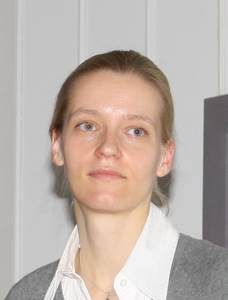


The functionality of single molecules as electronic devices relies on a good stability against large current densities. Electronic current generates heat in the molecular junction due to coupling of electrons with molecular vibrations and eventually leads to thermal decomposition of the molecule. Using a scanning tunnelling microscope operated at 5 K, we investigate the electronic current and power required to thermally decompose single C60 molecules adsorbed on a metal surface. The power for decomposition results from the balance of heating and cooling efficiencies. We find that heating varies with electron energy and reflects the resonance structure participating in the transport. Cooling, on the other hand, is a non-resonant process, dominated by the decay of molecular vibrations into electron-hole pair excitations in the metal substrate. When the STM tip contacts the fullerene the molecule can sustain much larger currents due to the opening of an additional decay channel at the STM tip. Direct evidence of electron-vibration coupling is its detection by inelastic electron tunneling spectroscopy (IETS). We show that out of the 46 non-degenerate modes of C60 all 8 Hg modes can be observed, revealing their dominating role in molecular heating.



The functionality of single molecules as electronic devices relies on a good stability against large current densities. Electronic current generates heat in the molecular junction due to coupling of electrons with molecular vibrations and eventually leads to thermal decomposition of the molecule. Using a scanning tunnelling microscope operated at 5 K, we investigate the electronic current and power required to thermally decompose single C60 molecules adsorbed on a metal surface. The power for decomposition results from the balance of heating and cooling efficiencies. We find that heating varies with electron energy and reflects the resonance structure participating in the transport. Cooling, on the other hand, is a non-resonant process, dominated by the decay of molecular vibrations into electron-hole pair excitations in the metal substrate. When the STM tip contacts the fullerene the molecule can sustain much larger currents due to the opening of an additional decay channel at the STM tip. Direct evidence of electron-vibration coupling is its detection by inelastic electron tunneling spectroscopy (IETS). We show that out of the 46 non-degenerate modes of C60 all 8 Hg modes can be observed, revealing their dominating role in molecular heating.